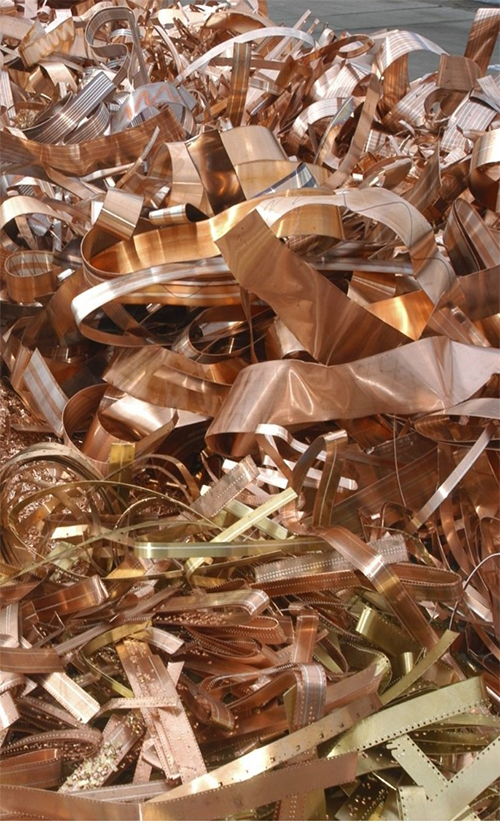Copper-Nickel Alloys
Copper-Nickel Alloys – Recycling and Scrub Overview
Copper-nickel alloys (also called cupronickel) are corrosion-resistant, durable metal alloys composed primarily of copper and nickel, often with small amounts of iron and manganese for strength and stability. Common grades include 90/10 (90% copper, 10% nickel) and 70/30 (70% copper, 30% nickel). These alloys are widely used in marine engineering, desalination plants, heat exchangers, coinage, and chemical processing due to their exceptional resistance to seawater corrosion and biofouling.
Recycling of Copper-Nickel Alloys
Copper-nickel alloys are fully recyclable and retain their mechanical and chemical properties through multiple recycling cycles. Recycling these alloys reduces dependency on raw ore extraction and significantly conserves energy and resources.
Recycling Process:
- Collection & Sorting
- Scrap is collected from fabrication offcuts, old marine equipment, heat exchanger tubing, and end-of-life components.
- Alloys are sorted by composition (e.g., 90/10 or 70/30) to ensure proper alloy specifications during remelting.
- Cleaning & Preparation
- Scrap is cleaned of oil, paint, and other contaminants.
- It may be shredded or cut into manageable sizes.
- Melting & Refining
- The scrap is melted in induction or electric arc furnaces.
- Impurities are removed, and alloying elements are adjusted to achieve the desired chemical composition.
- Casting & Reuse
- The refined metal is cast into billets, rods, or ingots, ready for manufacturing new products in marine, industrial, or engineering applications.
Copper-Nickel Scrub
Copper-nickel scrub refers to low-grade or contaminated material that contains copper-nickel alloy with impurities or mixed content. This includes:
- Weld spatter or chips from machining processes
- Coated or insulated tubing
- Used heat exchanger parts with scaling or deposits
- Mixed scrap containing other metals like stainless steel or brass
While copper-nickel scrub has lower immediate value than clean scrap, it can still be processed:
- Advanced separation techniques such as X-ray fluorescence (XRF) or optical sorting are used to identify and isolate usable material.
- Melting and refining remove contaminants and restore alloy quality.
- Scrub material is often used in secondary alloy production or downgraded to create compatible, lower-specification alloys.
Conclusion
Recycling copper-nickel alloys, including scrub material, plays a vital role in resource efficiency and sustainable metallurgy. The high value, excellent performance, and environmental benefits of copper-nickel alloys make their recycling both economically viable and ecologically responsible, especially in marine and industrial sectors where durability and corrosion resistance are essential.
